
There’s always been a big debate about whether or not one should buy a new motorcycle versus a used one. There’s really no right answer for this question, rather it is a specific preference for each individual and it all depends on what you like the best and what you feel is right for you.
I have purchased close to twenty motorcycles in my life time so I’ve frequently been in the spot trying to make this very decision myself. Because I’ve been in this situation so many times, I’ve been able to do a lot of research and asked around about which decision was right for me. Here are the points I found most helpful to make the best informed decision.
New Motorcycle Pro: Modern Systems
The first part of this article, I will explain the pros of purchasing a new motorcycle. The first point I’d like to bring up is the fact that new motorcycles have updated and modern mechanical systems that can ultimately make your riding experience safer. Such systems may include upgraded braking, suspension, and fuel functionality.
Every motorcycle made has to go through a series of tests to make sure they are functioning properly and that the brakes are working right. Any motorcycle you get will have acceptable braking systems (unless, of course, it was upgraded/taken apart by a previous owners).
The nice thing about new motorcycles is that they’ll generally come with updated disc brakes that are anti-lock, also known as ABS (anti-lock braking system). This means that the disc/drum brakes of the motorcycle are controlled by an electronic safety system so the tires and wheels do not lock and skid despite the full application of the brakes.
New motorcycles also come with a fuel injection system which takes out all of the headache of having an older carburetor to fix and clean every year.
New motorcycles will also have updated suspension. If you’ve ever ridden a motorcycle with poor suspension, you know exactly how important it is to have good suspension. The technology on this system is better than it ever has been before, so if you buy a new motorcycle you’re guaranteed to have that comfort last even longer than previous motorcycles made.
New Motorcycle Pro: More Resources to Finance
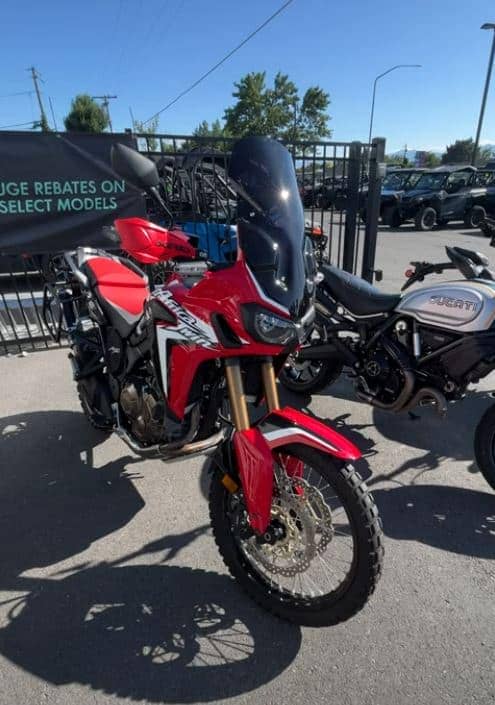
If you plan on buying a motorcycle new from the dealership, you have more options to finance your purchase. You can either get a loan from your bank or you can finance directly from the dealership.
A lot of people end up getting a loan directly through the dealership because of the convenience of not having to go back and forth from your bank to the dealer. Dealerships will sometimes have their own personal financing, or they will go through several banks for you.
When getting a loan from a dealership that does not have their own financing, they will contact several banks that they work with and give them your information. The dealership will then relay the information back to you and inform you of the best interest rate offered. The dealership adds an extra percentage on top of that to compensate themselves for doing the financing for you.
For example, the dealership may inform you of the best interest rate offered from one of the banks they work with, say 5%. The interest rate the bank offered would have been 4% and the dealership added on 1% that they pocket every year as payback for doing all that work for you.
If you decide to go through your own bank, you will save the 1%-2% the dealership would have charged you, but you’ll have to do the investigating yourself.
Used motorcycle loans have a lot more restrictions. Some banks won’t finance motorcycles past a certain age, while other banks won’t finance anything worth less than $5,000. If you want to finance a used motorcycle in these scenarios, you’d need to get a personal loan but the interest rate is exponentially higher with the average interest rate being 10%-30%, depending on your credit score.
New Motorcycle Pro: Less Maintenance
Any motorcycle you have will require at least a little bit of maintenance such as changing the oil, maintaining tire pressure, and keeping a clean and lubricated chain. But the newer the motorcycle you have, the less amount of maintenance you’ll need to do outside of the basics.
Some new motorcycles will have notifications reporting what system has poor performance, report the status of the oil, how thin the brake pads are getting, etc. That keeps you from guessing when you need to keep up with those fixes.
The new technology being developed for motorcycles makes the riding experience more pleasurable and worry-free. Engineers continue every year to impress us all with their new motorcycle technology.
Used and older motorcycles tend to require more fixes because of the natural wear and tear it’ll get from regular usage. Such fixes may include poor throttle response, electrical issues, braking issues, and/or strong vibrations at higher speeds. These fixes can add up and be a bit overwhelming if you don’t know how to fix them yourself.
New Motorcycle Pro: Warranties
Purchasing a new motorcycle often comes with the option of purchasing a warranty.
A motorcycle warranty is a signed agreement between the dealer/manufacturer and the motorcycle owner in which the manufacturer promises to fund and pay for repairs during a certain amount of time. You can get a manufacturer’s warranty which is usually added into the motorcycle purchase or can be added into your loan if you get one.
You can also get an extended warranty which is an additional protection plan that takes effect when the previous manufacturer’s warranty has run out or expired. You can get an extended warranty at the time you buy the motorcycle, or you can always buy it later if you change your mind. It does, however, need to be purchased while your original motorcycle warranty is still valid.
A warranty will cover a lot of fixes performed by the dealership at no cost to you. These fixes usually include fuel system, exhaust, electrical, cooling system, brakes, chassis, and engine repairs. Please note that not every repair is covered by a warranty such as spark plugs, batteries, filters, and tires. Be sure to discuss the specific repairs covered by your manufacturer as each one is different.
New Motorcycle Pro: It Will Last Longer
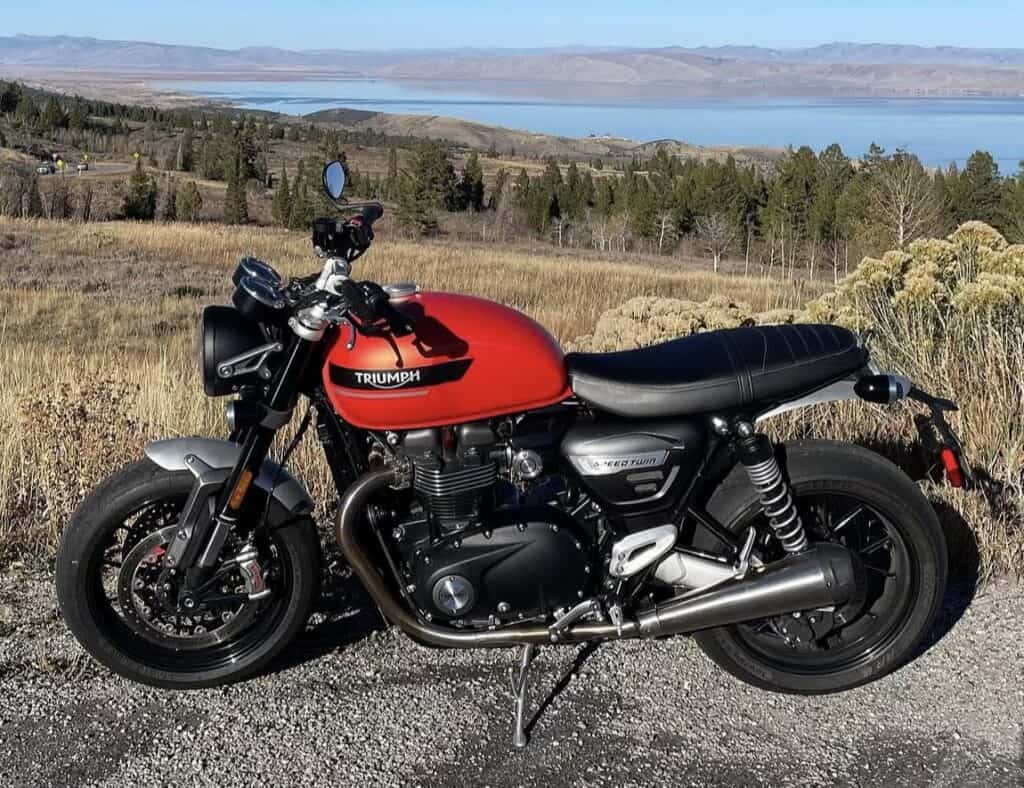
If you buy a new motorcycle, it will obviously last longer for you and you’ll be able to own it a lot longer than you would a used motorcycle. And because of the increased technology that continues to improve each year, you can bet that the new motorcycle you purchased may even have a longer life expectancy altogether than older motorcycles.
Because of improved technology, new motorcycles are becoming safer to ride. Such technological improvements include advancements in anti-lock braking systems, adaptive headlights, automatic transmissions, tire pressure monitors, and vehicle to vehicle communication.
The safer motorcycles become, the longer they will last. Essentially, if you don’t crash your motorcycle or get into some sort of wreck or accident, you’ll have less wear and tear to maintain in the future.
New Motorcycle Pro: You Know What You’re Getting Into
Sure, you know that if you buy a brand new motorcycle from a dealership, the salesman will try to get you to sign up and pay for more than you actually need. But the salesman (from the dealership) cannot lie about the product they’re selling. The really nice thing about getting a brand new motorcycle is knowing exactly what you’re getting into.
If you were to purchase a brand new motorcycle, legally a dealership/manufacturer can’t make any custom changes to it without letting you know. Otherwise the dealership would be obligated to compensate you for not letting you know of the changes they made.
I have never heard of a dealership/manufacturer making any customizing changes to their motorcycles outside of the standard procedures they do to all of their motorcycles. Basically, you won’t have to worry about any surprises.
All too often I have bought a motorcycle from a private seller and, surprise surprise, I’ve found some modifications done on the motorcycle that was not made aware to me by the seller. I’ve usually been able to overcome those modifications, but it was still time consuming, pricey, and incredibly annoying.
Used Motorcycle Pro: Depreciation And Appreciation
For the rest of this article, I will discuss the pros of purchasing a used motorcycle. There’s no doubt about it, purchasing a used motorcycle will be much cheaper than purchasing a new motorcycle from a dealership. Even if you were to purchase a motorcycle from someone who just purchased a brand new motorcycle yesterday, you would still get a good deal on it. That is due to depreciation.
When you drive a brand new purchased motorcycle off the lot, you will lose an instant 11% of it’s value in depreciation. For example, you can buy a brand new Honda CB650R for about $9,200. With 11% depreciation, your motorcycle will be worth about $8,188 once your drive it off the parking lot. Or if you get in a motorcycle accident the day after you buy it brand new, your insurance company will only give you $8,188 to replace it.
Motorcycles lose an average of 10% of their value each year after that initial depreciation. If you’re swaying towards buying a used motorcycle, let someone else pay for the depreciation for you that first little while.
When a motorcycle starts to get a little older, around ten years or more, your motorcycle could begin to appreciate, meaning it increases in value over time. This is because of increased demand for the bike, a weakened supply from the manufacturer, and/or changes in interest for that specific type of bike.
This does not apply to all motorcycles, but motorcycles do give a high chance of this because most people love old vintage motorcycles, especially when they’re brought back to life. If you buy a used motorcycle at the right time, you could possibly make money from it because of appreciation. You can learn more by reading my helpful motorcycle depreciation guide here.
Used Motorcycle Pro: Upgrades Will Increase Value
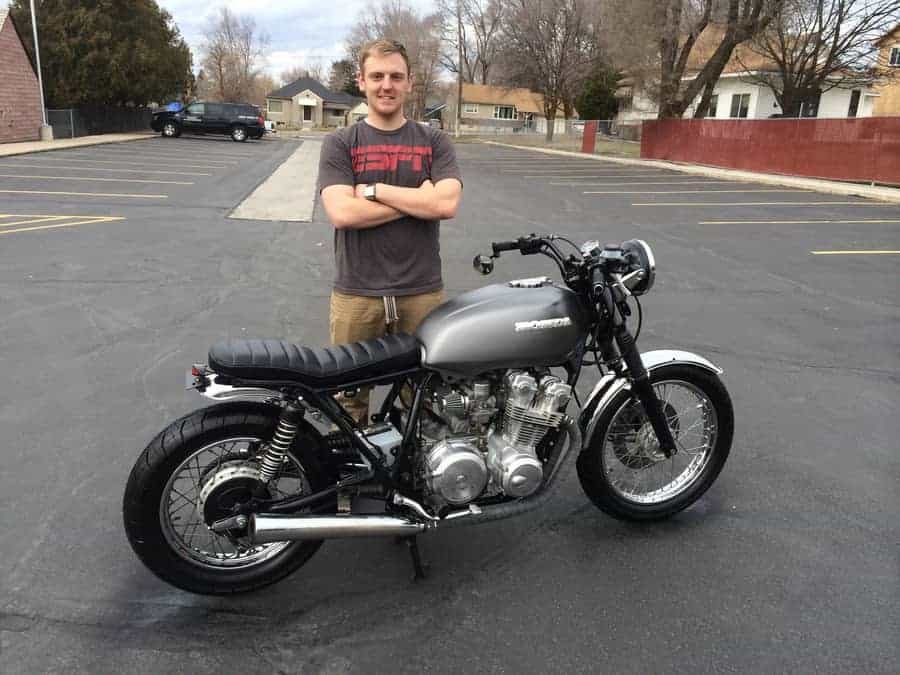
Here’s one of my custom builds I did during college. I flipped this motorcycle to buy my wife’s engagement ring.
Unlike a new motorcycle, upgrades you do on a used or older motorcycle will generally increase it’s value. This is especially the case if you’re able to do the upgrades yourself.
Upgrades to a used motorcycle may include a new seat, new tires, a rebuilt engine, repainted tank, new handle bars, etc. If you were to try to sell a motorcycle with a blown engine or a ripped seat, it wouldn’t sell as much as a motorcycle in a good running and cosmetic condition.
This is especially applicable to those who wish to rebuild and flip motorcycles. That’s what I did during college to help pay for my tuition. I bought old broken down motorcycles, fixed them up, and sold them.
I usually bought a motorcycle for around $700, invested about $1,000 to fix it up and upgrade it (I turned most of them into cafe racers), and sold them for around $5,000 – $5,500. That was usually at least a $3,000 profit! If you’d like to learn more about how I flipped motorcycles for a profit, see my guide here.
Customizing and adding any upgrades to a new motorcycle won’t increase it’s value at all (usually). If you buy a brand new motorcycle from the manufacturer, take it home, add a new seat and repaint some of the panels, your motorcycle will be worth the same amount of money you just bought it for.
If you do any crazy customizing on a new motorcycle, you may even bring down the value of the bike more quickly than natural depreciation would.
Used Motorcycle Pro: Easier to Customize
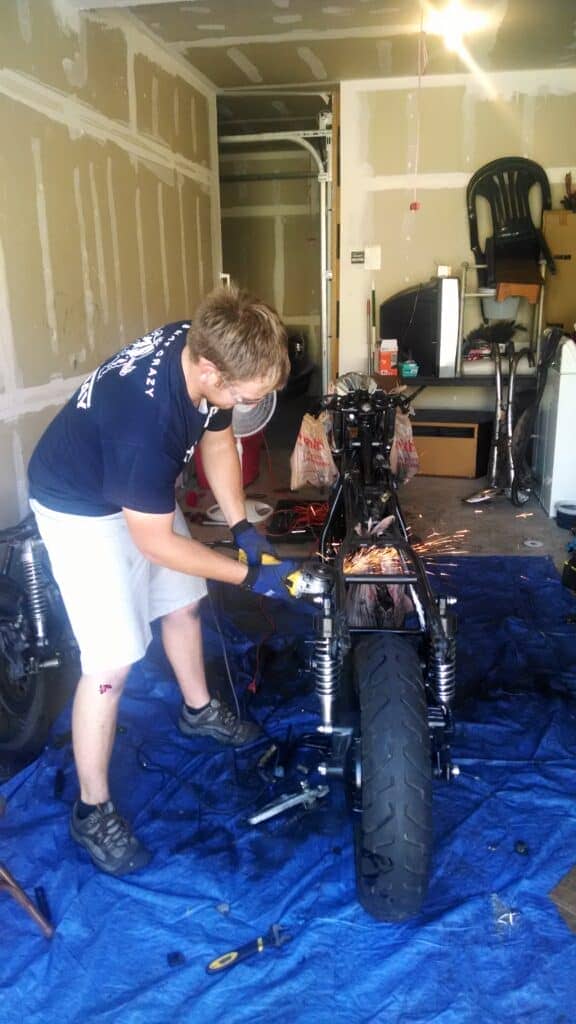
I have done some sort of customizing to every motorcycle I have purchased. It’s pretty common for this to happen; riders want to feel like the motorcycle belongs to them with their personality integrated into it.
Though all new motorcycles come with some exciting and convenient bells and whistles that make riding easier, if you plan on doing any customizing at all on a new bike, it’ll be quite difficult because of said technology.
Everything is going electric nowadays and most motorcyclists don’t know how to deal with the electric components on a new motorcycle. If you are to take it in to a shop and make custom upgrades on a new bike, it’ll be more expensive because of all the expertise required.
Used and older motorcycles are simple creatures; if anyone is willing to do a little research they can do most customizing themselves. (Click here to see my list of recommended tools to maintain and customize your motorcycle) Most older motorcycle frames were made with steel tubes welded together to fit a certain chassis. This makes it easier to work on and do most any customizing you’d like to do on the frame.
New motorcycles are made with titanium, carbon fiber, or aluminum which is more expensive and harder to work on without any professional help. And because this type of material is harder to work on, it’ll be that much more expensive to customize if you have any frame work that needs to be done professionally.
Used Motorcycle Pro: Less Expensive
As I mentioned before, new motorcycles are coming out with a lot of technology attached with them. It’s nice to have that, but it’s not nice to fix. And later down the road you’re going to have to fix them eventually.
Used and older motorcycles are a little more basic and don’t require as much work to fix them. Granted, newer motorcycles aren’t as susceptible to needed repairs, but that doesn’t mean they’re perfect machines and will never break down. Always expect to have repairs needed whether you own a used or a new motorcycle.
For example, if I need to replace the jets on a motorcycle carburetor, the average cost would be between $10-$20. If I need to replace the fuel injectors, the average cost would be around $60-$100.
This was the very reason I was able to purchase several motorcycles and flip them for a profit. Luckily parts were so inexpensive that I was able to buy everything I needed, even as a poor college student, and not have to wait until I had the money.
Aside from used and older motorcycles being less expensive to fix, motorcycle insurance for used bikes is actually significantly cheaper than insurance for new ones. New motorcycles equal new and more expensive parts, so insurance premiums will be higher.
Older or used motorcycles will cost an average of $20-$60 a month in insurance while a new motorcycle will cost an average of $100-$200 a month to insure (this all, of course, depends on your driving record and the type of motorcycle you get). You can click here to see motorcycle insurance agencies near you and compare rates that suit you and your needs.
Used Motorcycle Pro: “Kinks” Are Already Worked Out
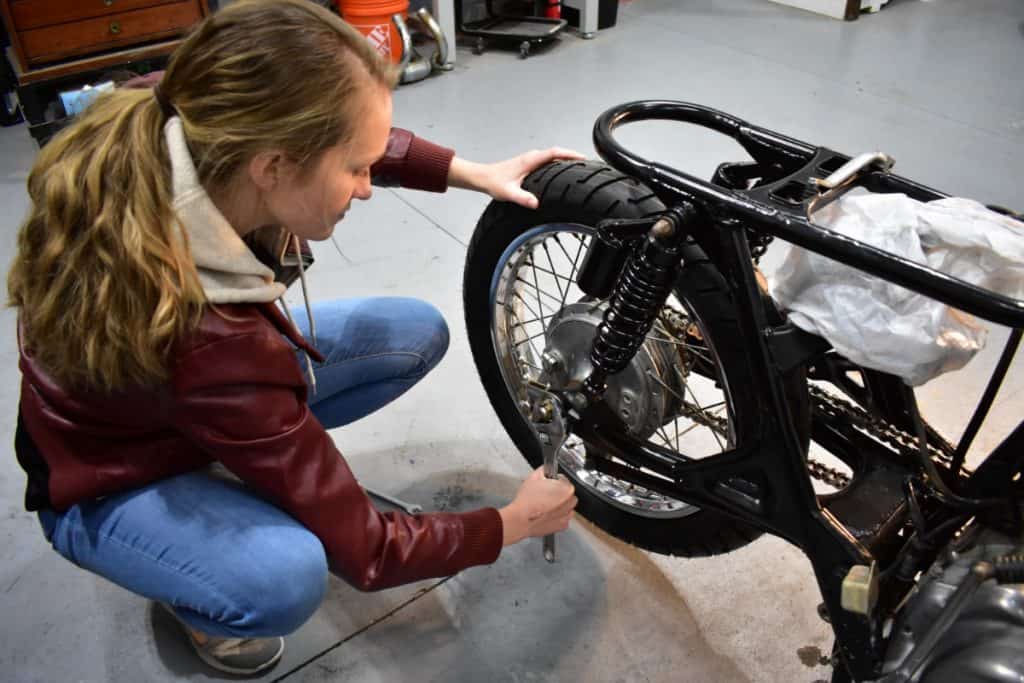
Some find comfort in knowing that when they purchased a used motorcycle, a lot of the “kinks” are worked out, meaning the original owner has run in to the problems specific to the model and has hopefully taken care of them.
In a perfect world, all motorcycles will have been made flawless and would last forever. Unfortunately this isn’t the case. Brand new motorcycles will have problems, even right after they were purchased. This is especially applicable to newly designed models of bikes where manufacturers are still experimenting to see what works and what doesn’t.
For example, the Harley Davidson Sportster XL Ironhead had a reputation of having bad starters; even brand new, the owners had to work it a bit to get it started as it had a kick start lever, so you had to put your whole body into it. These often required a new lever system altogether.
If you were to buy a motorcycle like this, the previous owner would probably have already replaced the starter and you wouldn’t have to worry about it. Otherwise, previous owners would be obligated to sell the bike for a lower price because of the work required to fix it.
Used Motorcycle Pro: You Know It’s Reputation
Every motorcycle has a reputation. With the world of the internet accessible at our finger tips, you can find out any information needed about any machine that’s ever been made.
It’s a good idea to do your research about any motorcycle you buy whether it’s new or used. A perk about buying a used motorcycle is that thousands of people have already test driven the same model and can give you an honest review of what the bike is like altogether.
Don’t plan on a dealership or manufacturer to give you a complete answer about the reputation of a motorcycle; a dealership couldn’t give you a good answer anyway because a new motorcycle model hasn’t been out long enough for people to know what it’s really like.
Before I bought a lot of my motorcycles, I did a great deal of research on them. There are a few great websites that describe what people love about the bike, what people dislike, and what their crash test ratings and braking systems are like.
Through your research, you can find explanations of some large problems that would be difficult to fix such as noticeable vibrations and poor acceleration. This can help you decide whether or not it’s a good motorcycle to invest in. You can’t really do that with a new motorcycle.
Conclusion
There is no right answer when it comes to buying a new or used motorcycle. A lot of this depends on your needs, what you’re looking for, and how long you plan on keeping it. New motorcycles will have warranties, last longer, and have more updated systems to keep you riding safe. Used motorcycles are generally cheaper to have, and its reputation and kinks are easy to research. Good luck with your purchase, I’m sure you’ll make the right decision for you!
Related Questions
When did motorcycles start using fuel injection systems? The first fuel injection system was introduced in 1980. Carburetors were usually what motorcycles had up until about the mid 2000’s. Fuel injected engines have been found to be more reliable and easier to use on motorcycles.
What is the average cost of a new motorcycle? A lot of motorcycle prices will vary depending on the make and model of the bike. If you plan on purchasing a brand new motorcycle for beginners, it will cost between $5,000-$10,000 depending on your needs and what you like best.
